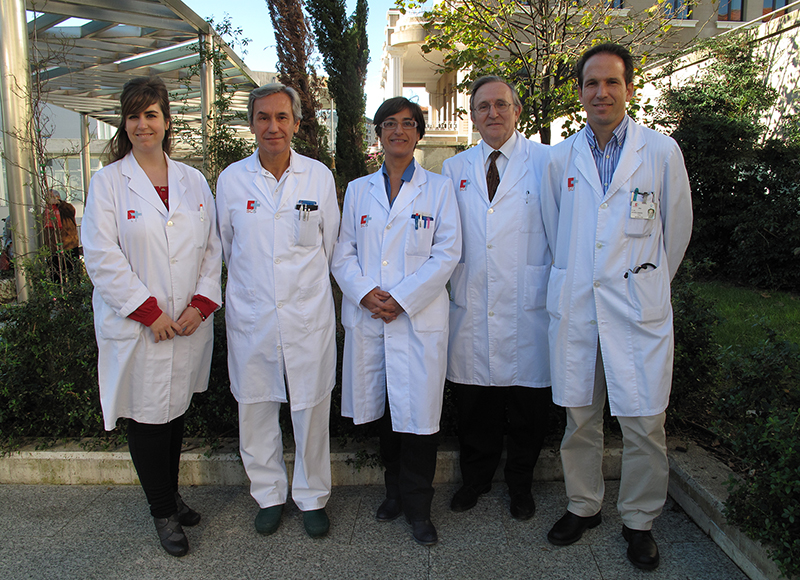 Researchers from the University of Cantabria, in collaboration with specialists at the Marqués de Valdecilla University Hospital (HUMV) and the University of Antwerp (Belgium), have succeeded in proving that the Charcot-Marie-Tooth disease, a hereditary degenerative disease that affects extremities, is caused by mutation of the gene called
LRSAM1.
Researchers from the University of Cantabria, in collaboration with specialists at the Marqués de Valdecilla University Hospital (HUMV) and the University of Antwerp (Belgium), have succeeded in proving that the Charcot-Marie-Tooth disease, a hereditary degenerative disease that affects extremities, is caused by mutation of the gene called
LRSAM1.
The work that records the discovery, entitled
"Charcot–Marie–Tooth Disease Type 2G Redefined by a Novel Mutation in LRSAM1", was published in the December edition of Annals of Neurology and it has been highlighted as a leading article in the same publication.
"We've been studying the origin of this neuropathy for decades", said José Berciano, Professor Emeritus at the UC and "it's only now – thanks to the possibilities given by genetic sequencing; combined with the clinical study, in other words, exploring the maximum number of members of an affected family; the neurophysiological study and, more recently, the imaging study, that enables us to see if the distal leg muscles are affected or not–, that we've been able to determine the origin of the condition".
"Today, we can see beyond the patient's symptoms", explains Elena Gallardo, from the Radio Diagnosis Service at Marqués de Valdecilla University Hospital (HUMV), "as with magnetic resonance of leg and foot muscles, it's possible to determine whether or not a subject is affected by the disease ".

Photo: Antonio García, José A. Berciano and Elena Gallardo.
Charcot-Marie-Tooth disease (CMT) is the most common nervous system disorder or hereditary neuropathy, with a prevalence of 28 cases per 100,000 inhabitants in Cantabria, in other words about 13,000 cases in Spain. It is clinically manifested by pes cavus and peroneal muscular atrophy syndrome to a varying degree.
Muscular magnetic resonance (MR) has proved to be an excellent biomarker. Assessed together with clinical, neurophysiological and muscular magnetic resonance semiology, investigators have been able to distinguish between affected subjects, potential carriers of a subclinical pathogenic mutation (incomplete penetrance) and healthy subjects at risk.
With a better phenotypic definition, the following step was to retake the genetic linkage analysis to then "hunt" for a pathogenic mutation, explains Berciano.
The work concludes that CMT2G is caused by a missense mutation in
LRSAM1, so it should be reclassified as CMT2P. Analysis in the cells of various patients has enabled the identification of new factors associated with LRSAM1 dysfunction, which offer new therapeutic targets shared with amyotrophic lateral sclerosis and Alzheimer's disease.
Now, "the following step will be to be able to provide genetic counselling, in other words, to diagnose a subject affected by the disease and proceed to the preimplantation of a fertilised ovule that doesn't have the mutation", points out José Berciano.
Photo: Members of the team participating in the study. From left to right, Ana Lara Pelayo, HUMV Neurology Service; Antonio García, HUMV Neurophysiology Service; Elena Gallardo, HUMV Radio Diagnosis Service; José Ángel Berciano, Professor Emeritus at the UC and Jon Infante, Director of HUMV Neurology Service.
